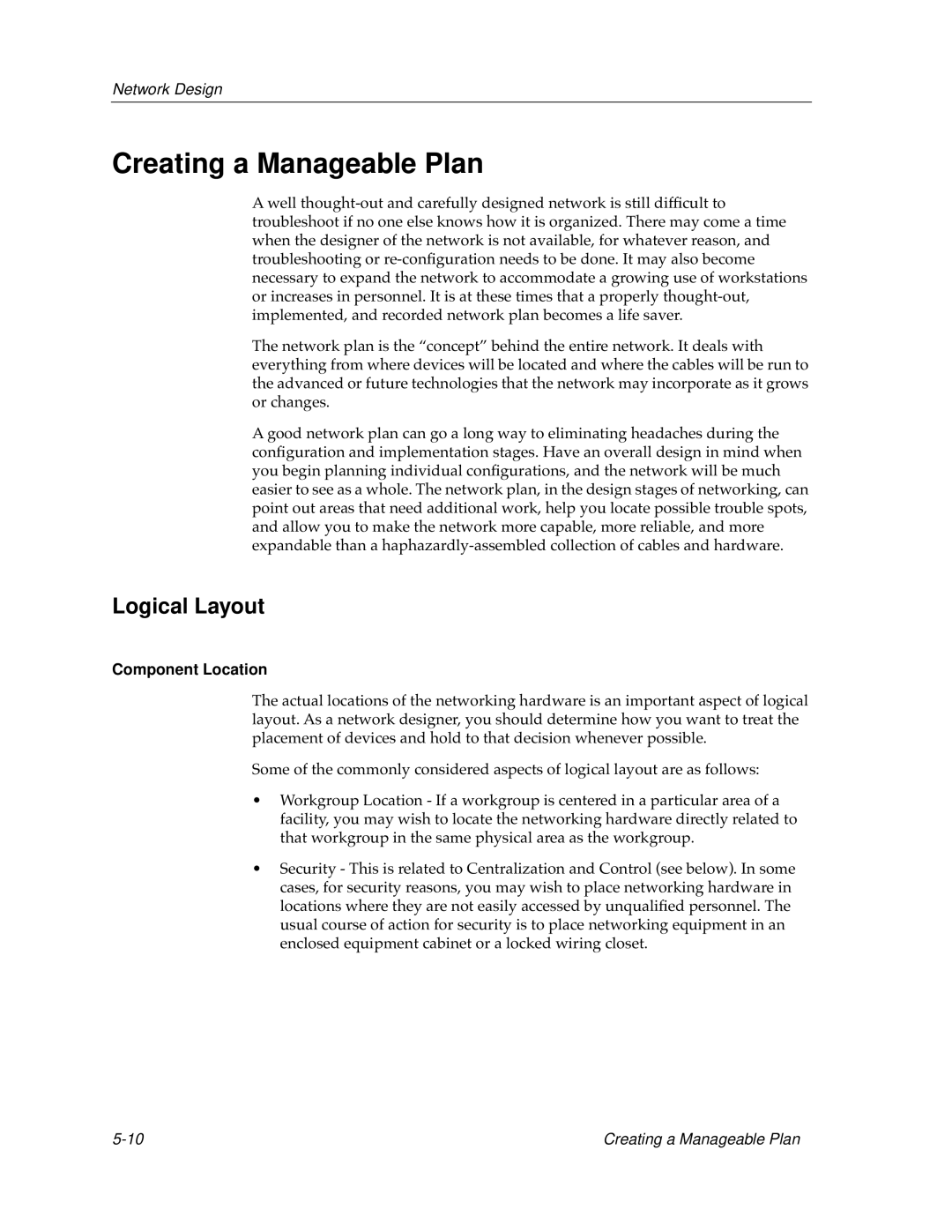Network Design
Creating a Manageable Plan
A well
The network plan is the “concept” behind the entire network. It deals with everything from where devices will be located and where the cables will be run to the advanced or future technologies that the network may incorporate as it grows or changes.
A good network plan can go a long way to eliminating headaches during the configuration and implementation stages. Have an overall design in mind when you begin planning individual configurations, and the network will be much easier to see as a whole. The network plan, in the design stages of networking, can point out areas that need additional work, help you locate possible trouble spots, and allow you to make the network more capable, more reliable, and more expandable than a
Logical Layout
Component Location
The actual locations of the networking hardware is an important aspect of logical layout. As a network designer, you should determine how you want to treat the placement of devices and hold to that decision whenever possible.
Some of the commonly considered aspects of logical layout are as follows:
•Workgroup Location - If a workgroup is centered in a particular area of a facility, you may wish to locate the networking hardware directly related to that workgroup in the same physical area as the workgroup.
•Security - This is related to Centralization and Control (see below). In some cases, for security reasons, you may wish to place networking hardware in locations where they are not easily accessed by unqualified personnel. The usual course of action for security is to place networking equipment in an enclosed equipment cabinet or a locked wiring closet.
Creating a Manageable Plan |
